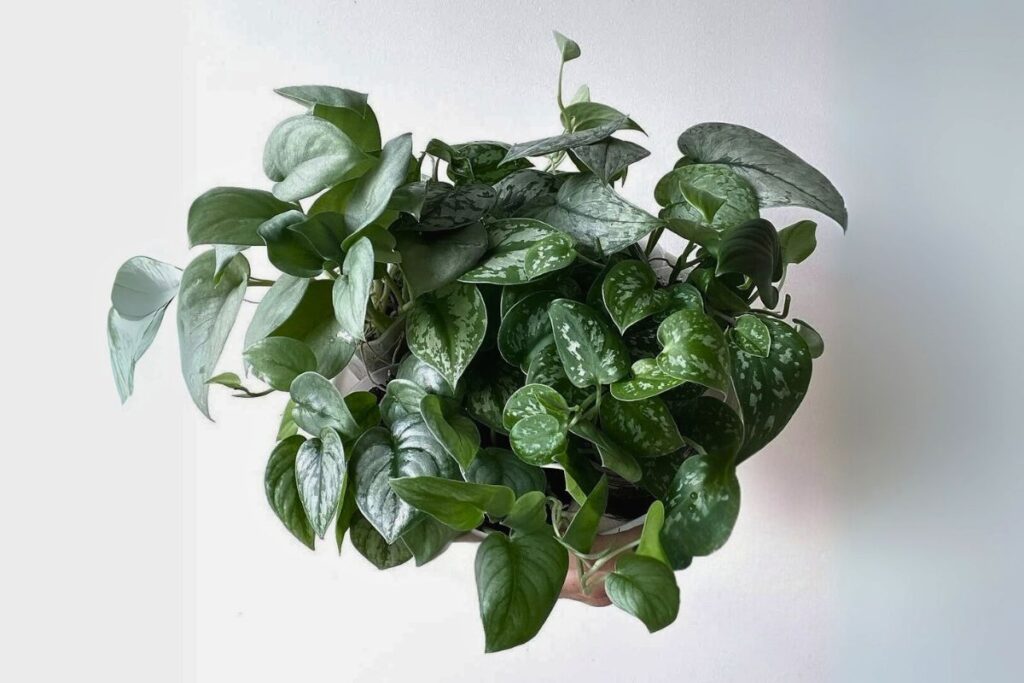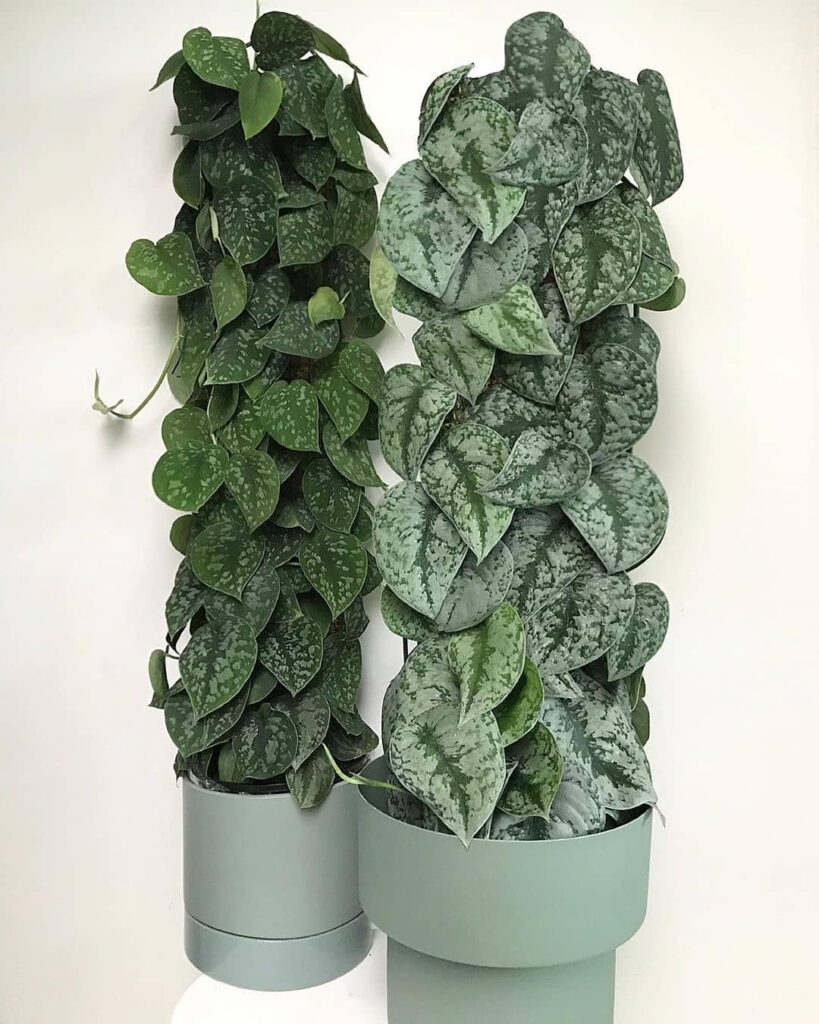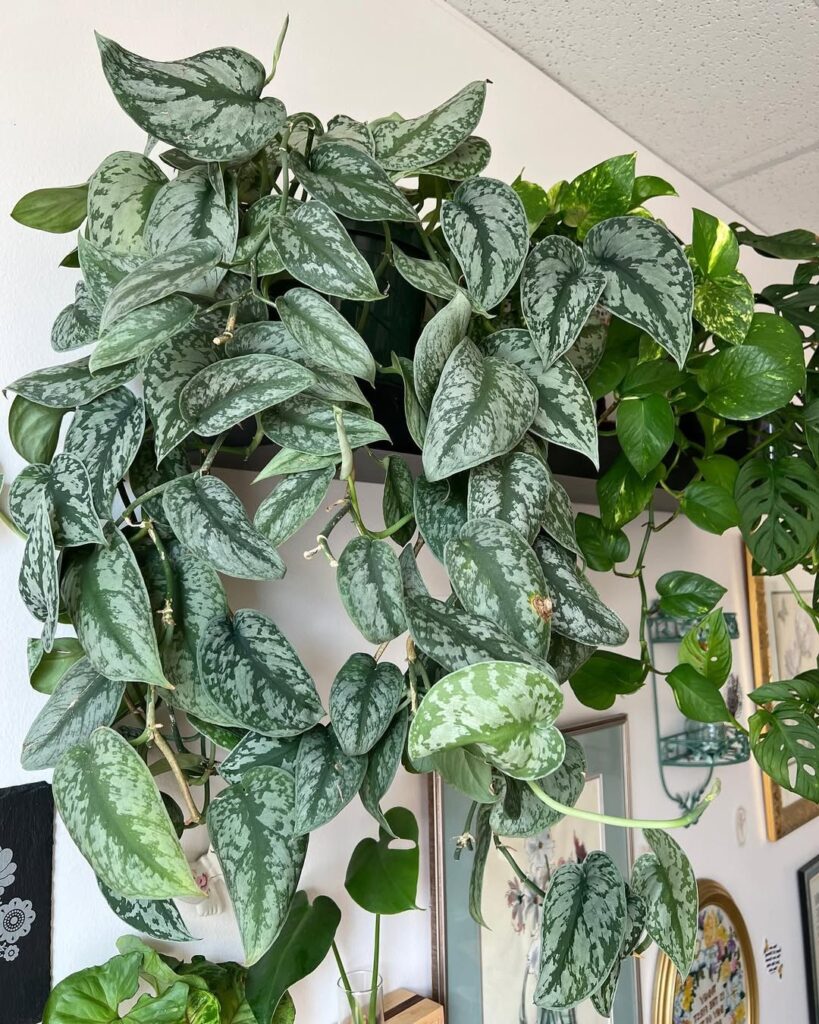Scindapsus plants, commonly known as Satin Pothos or Silver Vine, are beloved for their striking, silvery-green foliage and low-maintenance nature. These versatile plants can add a touch of elegance to any indoor space, making them a favorite among plant enthusiasts. Whether you’re a seasoned plant parent or just beginning your indoor gardening journey, this guide will provide you with all the tips and tricks to help your Scindapsus plants thrive.

Contents
Choosing the Right Location
Scindapsus plants thrive in bright, indirect light. While they can tolerate low light conditions, they grow best when placed near a window with filtered sunlight. Avoid direct sunlight, as it can scorch their delicate leaves. If natural light is limited, you can use a grow light to provide the necessary illumination. Aim for about 6-8 hours of bright, indirect light daily to ensure healthy growth.
Maintaining Proper Temperature and Humidity
Scindapsus plants prefer warm and humid environments, similar to their native tropical habitat. Keep your plant in a room with temperatures ranging from 60-85°F (15-29°C). Avoid placing it near drafty windows or heating vents, as sudden temperature fluctuations can stress the plant. To maintain humidity, mist the leaves regularly or place a humidity tray with water and pebbles underneath the pot. A room humidifier can also help create a more suitable environment.
Watering Wisely
Proper watering is crucial for the health of your Scindapsus plant. Water the plant thoroughly when the top inch of soil feels dry to the touch. Ensure the pot has drainage holes to prevent water from accumulating at the bottom, which can lead to root rot. During the growing season (spring and summer), you may need to water more frequently, while in the dormant period (fall and winter), reduce the frequency to avoid overwatering.
Soil and Fertilizing
Scindapsus plants thrive in well-draining, nutrient-rich soil. A mix of potting soil, peat moss, and perlite or sand works well to provide the right balance of moisture retention and aeration. Feed your plant with a balanced, water-soluble fertilizer diluted to half strength every 4-6 weeks during the growing season. Reduce or stop fertilizing during the dormant period to prevent nutrient buildup.
Pruning and Training
Regular pruning helps maintain the shape and size of your Scindapsus plant. Remove any yellowing or dead leaves to encourage new growth and keep the plant looking its best. You can also trim back any leggy stems to promote a bushier appearance. As a vining plant, Scindapsus can be trained to grow in various ways, such as trailing from a hanging basket or climbing a moss pole.
Styling Your Scindapsus Plant
Scindapsus plants are versatile and can be styled in various ways to enhance your indoor decor. Here are some ideas to help you create a stunning display:
- Hanging Baskets: Use hanging baskets to showcase the plant’s trailing vines. This not only saves space but also adds a dynamic, vertical element to your decor.
- Moss Poles or Trellises: Train the plant to climb a moss pole or trellis. This can create a striking focal point and allow the leaves to spread out beautifully.

- Shelves and Ledges: Place your Scindapsus on shelves or ledges where the vines can trail down. This is perfect for adding a touch of greenery to higher spots in your home.

- Tabletop Displays: For a more compact look, position the plant on a tabletop or desk. Let the vines drape gracefully over the edges for a sophisticated touch.
- Creative Containers: Choose decorative pots and containers that complement your interior design. The contrast between the plant’s vibrant green leaves and stylish pots can enhance the overall aesthetic.
Propagation Techniques
Propagating Scindapsus plants is relatively easy and a great way to expand your collection or share with friends. Here are two common methods:
Stem Cuttings
- Choose a healthy stem with several leaves.
- Using clean scissors or pruning shears, cut a 4-6 inch section just below a node.
- Place the cutting in water or a well-draining potting mix. If using water, change it regularly to prevent stagnation.
- Once roots develop, transplant the cutting into soil.
Air Layering
- Select a healthy stem and make a small incision just below a node.
- Wrap moist sphagnum moss around the incision and cover it with plastic wrap.
- Keep the moss consistently moist until roots form.
- Once roots develop, cut the stem below the new roots and plant it in soil.
Dealing with Pests and Diseases
Scindapsus plants can occasionally fall victim to pests such as spider mites, aphids, and mealybugs. Regularly inspect your plant for signs of pests and treat any infestations promptly with insecticidal soap or neem oil. Maintaining proper care practices and a clean environment can help prevent most common issues. Yellowing leaves can indicate overwatering or inadequate light, so adjust your care routine as needed.
Troubleshooting Common Issues
- Yellowing Leaves: Often a sign of overwatering or poor drainage. Check the soil moisture and ensure the pot has adequate drainage.
- Brown Leaf Tips: This can indicate low humidity or underwatering. Increase humidity levels and adjust your watering schedule.
- Leggy Growth: Lack of light can cause leggy growth. Move the plant to a brighter location or provide supplemental light.
Growing Scindapsus plants indoors can be a rewarding experience, adding a touch of elegance and vibrancy to your home. By following these care tips and paying attention to your plant’s needs, you’ll be well on your way to enjoying a lush and healthy Scindapsus plant. Happy planting!
